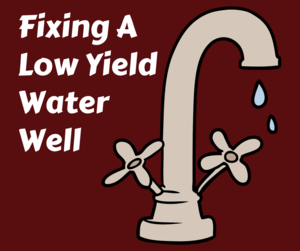CALL TODAY 1-800-441-6281
CALL TODAY 1-800-441-6281

Lead Hazards in Drinking Water | Testing and Treatment for Contamination
Today we know that lead poisoning poses a real threat to our families and especially our children. In years past, the health risks of consuming small amounts of lead were not fully understood. That's why so many well systems and much of our plumbing utilized lead. After many years of study it has become apparent that lead poisoning is a real problem, especially in construction that was built before new federal guidelines concerning lead components.
What is Lead Poisoning?
Lead poisoning is typically caused by prolonged exposure to small amounts of lead present in drinking water. Over time the lead builds up in the blood stream and can cause a number of health problems. On a small scale it could lead to difficulty breathing and swallowing. Long term the lead build up begins to damage the central nervous system and can cause irreversible damage to the liver and kidneys. Children who are exposed to lead are likely to suffer the most with developmental problems.
How to Treat Water for Lead
While it is currently cost prohibitive for many homeowners to put all new plumbing in their homes to reduce the risks of lead exposure, there are quite a few filtration options available today. Point of Use filtration systems are designed to remove lead at the tap, maximizing their ability to catch all of the lead from both inside and outside your house. First of all there are under-sink filters called Reverse Osmosis filters that remain hidden and utilize a tightly woven membrane to catch lead particles. Unfortunately these systems are very inefficient and only turn about one quarter of the water they use into potable water. The rest becomes waste. On the other hand, other filters include faucet mounted, separate counter top units and some under sink inline systems. The under sink and counter top units attach to the cold water line and divert water through the filter only when it is activated by the user for consumption. This system prolongs the life of the filter by only utilizing it when it is most needed. Water for washing dishes or other tasks will not be filtered. Faucet mounted filters connect directly to the tap output and generally have a switch on the side. All water passes through the filter unit, but not all of the water is forced through the filter so you can still decide when you want to filter the water for drinking and when to bypass.
Annnual Water Testing, Filter Maintenance
The first step is to test for lead contamination and the corrosivity of your water. We learned from the catastrophe in Flint, MI that corrosive water causes lead to leach from old water lines into household water supplies The most important part of installing a point of use filtration system to protect your family from lead contamination is maintaining the unit long term. Filters get clogged and your system becomes ineffective over time. Changing filters on a regular basis is imperative for getting the best results. Many filtration units now include a sensor that warns you when your filter needs to be changed or cleaned.
In order to best protect your family from the dangers of lead poisoning, the best thing to do is install a new filtration system today. The sooner you begin removing lead from the water, the safer you will be. While whole home filtration systems can protect you from lead coming into your house from outside plumbing, point of use systems are the best way to protect yourself from the lead that is already present in your own home.

